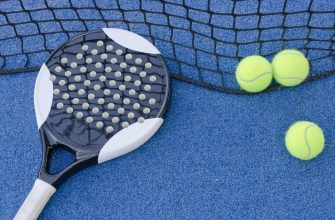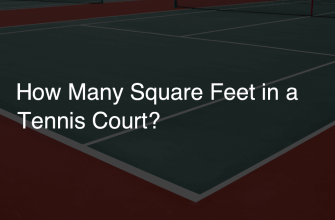Tennis is often viewed as a graceful sport, with players elegantly moving across the court to strike the ball with precision and finesse. However, behind those fluid strokes and dazzling shot-making lies a fierce physical and mental battle. This is evidenced by some of the sport’s most epic matches, where opponents are locked in grueling rallies lasting hours upon hours over several days.
The image of polite competition in white uniforms belies the extreme demands tennis places on mind and body. When one examines what it takes to compete at the highest levels, it becomes clear that tennis is far from a leisurely pastime. The sport requires incredible physical conditioning, intense concentration, precise technique, and unyielding mental toughness. Simply put, tennis is one of the most challenging sports around.
Physical Demands

Tennis is a physically demanding sport that requires a combination of cardiovascular endurance, muscular strength and power, speed and agility. The sport involves repeated quick sprints and sudden starts and stops during points, requiring explosive leg strength and anaerobic power. Players must have the ability to quickly accelerate, decelerate and change direction while running on the court.
Tennis points last an average of 5 to 10 seconds, with rests periods of 20 to 90 seconds between points. This stop-and-go nature requires a mix of aerobic and anaerobic fitness. During long rallies, aerobic endurance helps a player maintain intensity. Anaerobic power is needed for short bursts of speed to chase down drop shots or hit quick winners. Overall, the varying intensities and durations place high physical demands on tennis players.
Mental Focus
Tennis requires an immense amount of mental focus and concentration during matches. Players must be fully focused on the ball and their opponent’s positioning at all times in order to react and place shots effectively. Formulating winning strategies against opponents and being able to quickly adjust those strategies during matches is another key mental skill. Elite players are able to remain focused and block out all external distractions no matter the score or situation.
They concentrate only on the point at hand, never dwelling on past mistakes or looking ahead. Maintaining focus for the entirety of a long match requires great mental stamina. The ability to refocus after errors and not allow frustration to build is critical as well. Tennis champions consistently cite mental focus and concentration as one of the most vital skills to develop.
Hand-Eye Coordination
Tennis requires exceptional hand-eye coordination as players must track and strike a small, fast-moving ball. The ability to judge the ball’s path and make quick adjustments is critical. As the ball can travel over 100 mph, players must react within a fraction of a second.
The neuroscience behind hand-eye coordination involves visual tracking and motor control. As the ball approaches, the eyes lock onto the target and the brain calculates its speed and trajectory. This visual information guides the motor system to coordinate the arm, hand, and racket to intersect the ball’s path.
Tennis rallies demand concentrated focus, with the eyes continuously tracking the ball’s location while the body repositions itself. Developing this visuomotor control through repetitive practice is key. Players train hand-eye coordination using drills like ball machines, which send rapid shots to field. Mastering these reactions is essential to successful tennis performance.
Fitness Required

Tennis players require immense fitness to compete at a high level. This includes endurance, flexibility, and strength training.
Endurance is crucial in tennis. Matches can last for hours, requiring players to run constantly during points and recover quickly. Most pros do extensive cardio training to build stamina. Some drills include long distance runs, interval training, and running stairs.
Flexibility is also key. Tennis involves explosive movements and quick changes of direction. Players need full mobility and range of motion to reach distant shots. Stretching techniques like yoga and Pilates prevent injury and enhance agility.
Finally, strength training builds power. Hitting groundstrokes, serves, and overheads requires tremendous strength. Weight lifting, resistance bands, medicine balls and bodyweight exercises help develop muscle and prevent fatigue.
Overall, the unique demands of tennis necessitate well-rounded fitness. Pros finely tune endurance, flexibility and strength to withstand matches and remain competitive.
Playing with Injuries
Tennis players often continue competing even when injured.
Some common tennis injuries include:
-
Tennis elbow – Pain and inflammation on the outer part of the elbow. Repetitive motion from backhands can lead to overuse and tears in the tendons.
-
Rotator cuff tears – The rotator cuff muscles stabilize the shoulder joint. Repeated serving motions or falls can cause partial or full thickness tears.
-
Knee injuries – Jumping, pivoting, and lunging can strain the knee joint. Patellar tendinitis (jumper’s knee) and meniscus tears are common.
-
Back pain/stress fractures – Constant twisting to hit shots applies loads of pressure on the back. Stress fractures can develop over time.
Many professional players have continued competing through significant injuries, relying on pain management techniques and adjusting their play. Roger Federer, Rafael Nadal, Serena Williams, and Naomi Osaka have all spoken about persevering through pain on court. While admirable, playing through injuries can lead to more chronic issues down the line. Proper rest and recovery is key to longevity in the sport.
Elite Level Training

Tennis is widely considered to be a demanding sport at the professional level. Elite players must dedicate immense time and effort to hone their skills through rigorous training regimens.
Top professionals typically spend 3-4 hours on court practicing their shots and tactics at least four days per week. They also incorporate less intense training sessions on 2 additional days per week. This amounts to 20-25 hours on the court each week dedicated solely to improving their tennis game.
In addition to on-court practice, pros must commit significant time to physical conditioning such as cardio, strength training, and injury prevention exercises. This can add another 10+ hours of training per week. Strength and power are critical for generating racquet speed and preventing fatigue.
The intense dedication required illustrates why tennis is regarded as a challenging sport at the highest levels. Pros essentially make tennis their full-time job with 30+ hours per week of training across multiple disciplines. The daily grind and single-minded focus affects all aspects of their lives.
Dealing with Elements
Tennis players often have to contend with difficult weather conditions like heat, wind, and sun glare while competing. Extreme heat can lead to dehydration, fatigue, and heat illness if players do not properly hydrate and take necessary precautions. Wind can greatly affect the flight and bounce of the ball, requiring players to make adjustments like using more spin, keeping shots lower, and watching the ball closely.
Bright sun can cause issues with visibility, so players may use visors, sunglasses, or special anti-glare lenses to reduce sun glare interfering with their vision. Coping with intense elements tests players’ physical endurance and mental composure. The ability to adapt one’s game and remain focused under taxing environmental conditions is a sign of a mature, professional tennis player.
Mental Toughness
Mental toughness is crucial in tennis, a sport that requires players to overcome nerves and stay focused in high-pressure situations. Tennis matches can last hours and maintaining concentration is vital. A lapse in focus of just a few points can turn the tide of a match. Players must be mentally tough to push through physical exhaustion, tune out distractions from spectators, and handle the emotional highs and lows during competition.
Developing mental toughness skills allows players to manage nerves better and remain composed under pressure. Mentally tough tennis players are able to regroup after losing a point and focus on the next one. They don’t dwell on mistakes or let emotions boil over. Strong mental fortitude is often what separates good tennis players from great ones. The most successful players are able to thrive under pressure and stay focused on their game plan point after point, game after game.
Conclusion
Tennis is indeed a challenging sport, both physically and mentally. The hand-eye coordination, quick reflexes, agility, and fitness required for success demonstrate the athletic demands. Mentally, tennis players must maintain extreme focus and concentration amidst pressure and fatigue. They need tenacity and mental fortitude to succeed. While the casual player can enjoy a friendly game with moderate effort, aspiring professionals must train rigorously to compete at the elite level.
The mental toughness to persevere through difficult drills, long matches, and inevitable losses is equally important. As the famous tennis player Arthur Ashe once said, “Success is a journey, not a destination. The doing is often more important than the outcome.” While tennis has high barriers to mastery, its challenges also provide a lifetime of growth. The pursuit breeds qualities like discipline, resilience, and humility. In the end, that’s what makes tennis such a rewarding and fulfilling sport.








